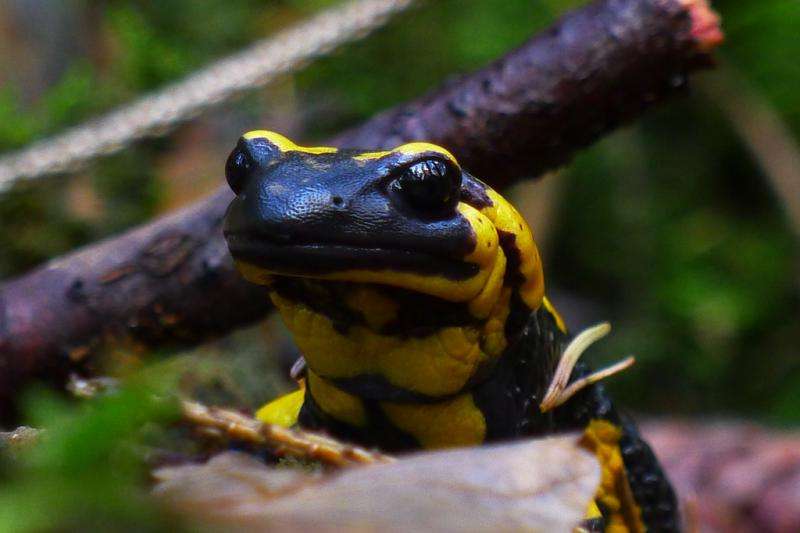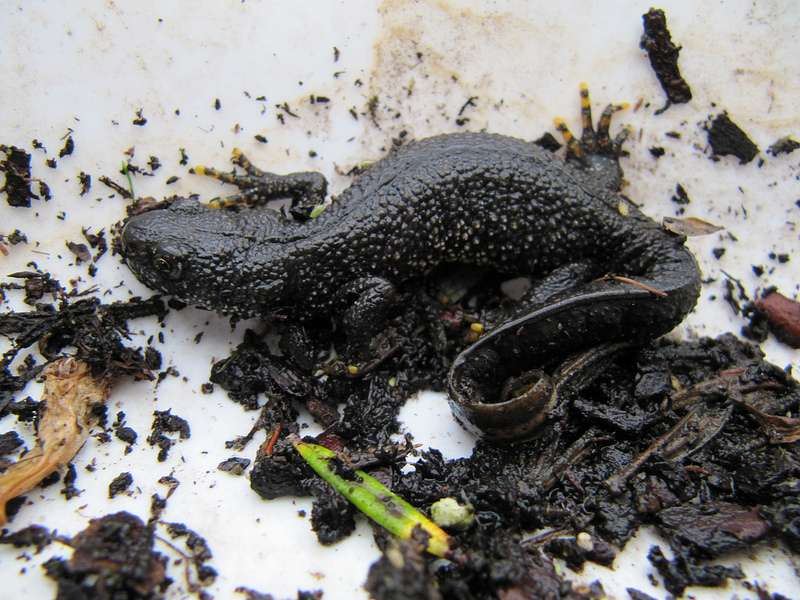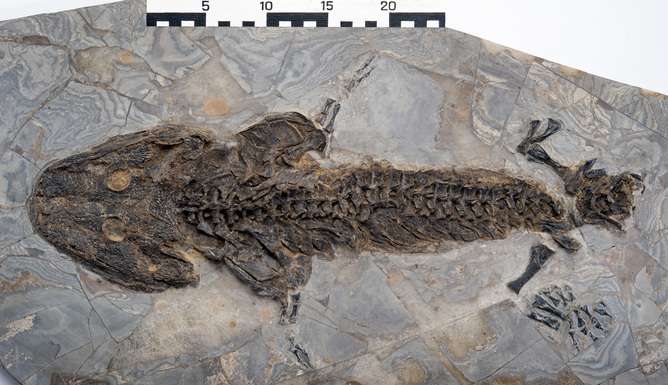Fossils reveal ancient secrets of salamander ancestors' limb regrowth

The natural world can be a dangerous place. With constant competition for food, shelter and a mate, it's more than likely that things will end up getting violent. In the unfortunate event of a serious injury, such as the loss of a limb, what do you do? Well, in the case of the amphibian salamander, you simply grow a new one.
In the modern world, salamanders are the only adult vertebrates able to regrow their limbs at any time in their life. But how and when did these animals come to possess this unique ability? A new study, published in Nature, looks back at the fossil record and suggests that salamanders' ancient ancestors may also have had this ability – tens of millions of years before the time of the dinosaurs. A related study looking at newts (in the salamander family) suggests that particular genes may hold the key.
Salamanders possess another characteristic that makes them unique among all other tetrapods (four-limbed animals). When a salamander's limbs grow, the two fingers, or digits, closest to a salamander's head develop first, something called "preaxial dominance". It had been assumed that this way of growing digits might have played a role in their ability to regrow limbs. However, there was one limb regeneration anomaly in the salamander family that had researchers puzzled.
Newt so simple
Up until now, scientists were confused by how adult newts were able to regrow their limbs, because they didn't display any evidence for preaxial dominance – all of their digits developed at the same rate. This certainly didn't agree with the idea that preaxial dominance was key to regrowth.

However, the scientists studied limb regeneration in young newts (tadpoles). They found at this early stage tadpoles generate their limbs with preaxial dominance – something that appears to be lost in adult newts. Providing evidence that perhaps even in newts, preaxial dominance and limb regrowth may be linked. Yet, scientists still felt there was more to be understood about this incredible ability – and the paper goes on to show that genetics may provide an answer.
Specific genes called Prod1 and Bmp2 have been recognised as being responsible for the regrowth process in two different species of salamander. But these species are known to have branched off down very different evolutionary pathways during the Jurassic period – 200m years ago. This means it's more than likely that such a trait was evident in a salamander's prehistoric ancestors. So when exactly did this ability to regrow limbs evolve?
Micromelerpeton, an ancient relative of amphibians from the Early Permian period, also appears to show evidence of both preaxial dominance and limb regeneration. Micromelerpeton is long extinct so there's no way to watch limbs develop as the animal grows, as is the case with modern salamanders. But the Nature scientists were able to identify limb abnormalities that are characteristic of regeneration from their fossils. This pushes back our current understanding of limb regeneration in the animal kingdom to almost 300m years ago.
And the incredible abilities of a salamander don't end there. Not only can they regenerate their limbs, salamanders can also regrow their tail. Lungfish, frog tadpoles and lizards also have this neat party trick. Yet salamanders can regrow a fully articulated tail including segments of bone. A lizard's regrown tail, on the other hand, is made of one long piece of cartilage.

If we look back into the fossil record, there's also evidence for tail regeneration there. Fossils of the extinct microsaur amphibians Microbrachis and Hyloplesion clearly show where part of the tail has regrown and joined to the original tail bone. Just another incredible example of how nature has been able to evolve and adapt from the very dawn of life on Earth.
Source: The Conversation
This story is published courtesy of The Conversation (under Creative Commons-Attribution/No derivatives).
![]()



















